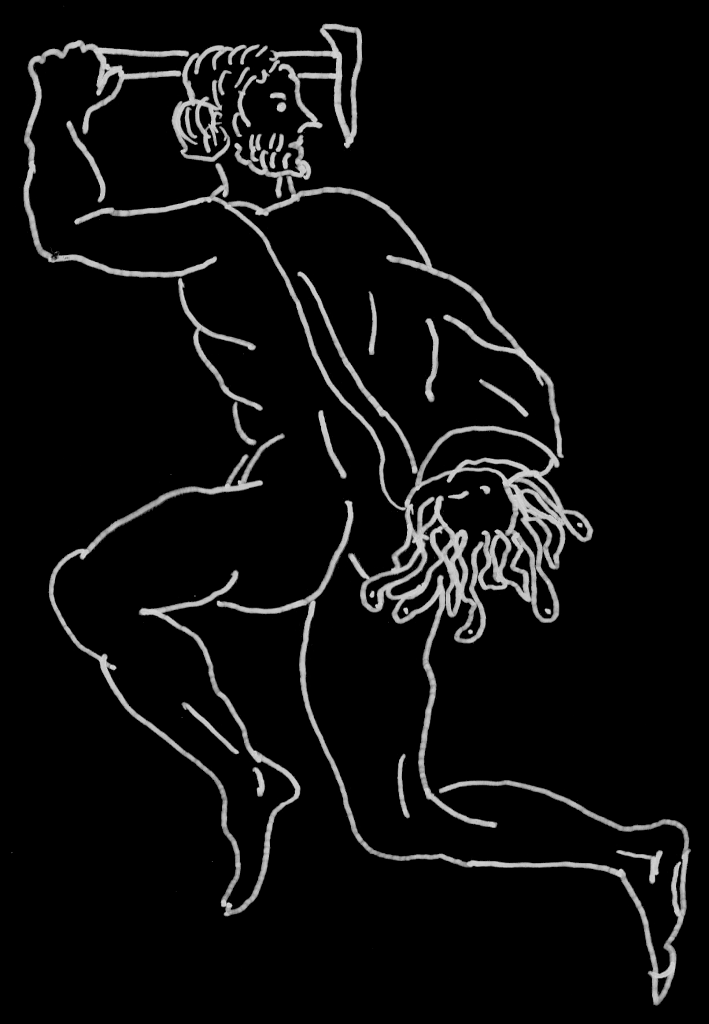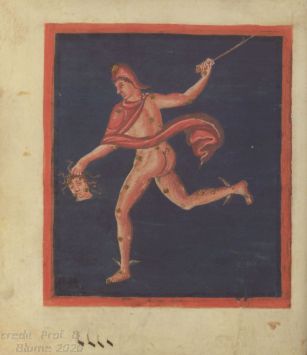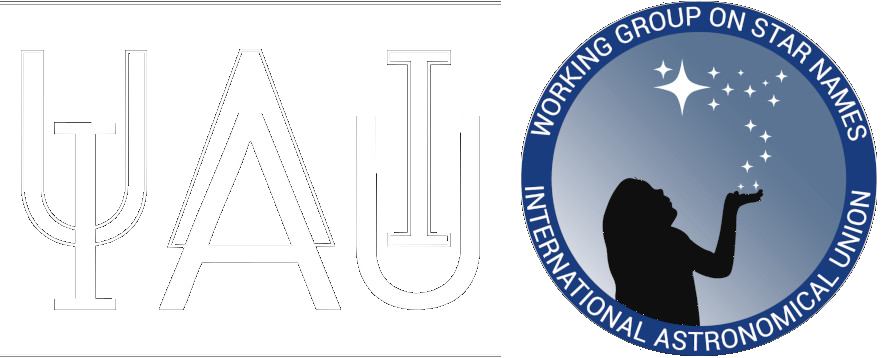Profile / Characteristics
| English translation | Latin declination and pronunciations | Size/ °² | # stars (visible) |
| the Hero | Perseus – PER-see-us, PER-syoos Persei – PER-see-eye | 615 | 163 |
Main Star (brightest one):
| Designation | HIP number | name in IAU-CSN | brightness |
| α Per | HIP 15863 | Mirfak | 1.79 mag (V) |
Our (modern) Explanation
Perseus, The Hero, is a constellation of the northern sky. Its Babylonian predecessor is an Old Man, a god of the earlier generation of gods, who walks after a plough. The old man walks bent forward so that his head is marked by bright stars, and the star cluster around alpha Persei marking the seeds that he carries (like van Gogh’s seeder) in front of his breast. The Greek reinterpretation of this image as Andromeda’s groom, a young man, leaves Perseus a bit headless among the stars. The ancient hero carries a metallic weapon against Cetus in his upper hand (marked by the double cluster h and chi Per) and the winged shoes of the god Hermes/ Mercury (wings marked by the silverfish glittering Pleiades).
Ancient Globes



Farnese Globe
Kugel Globe
Mainz Globe
The two men are connected at their feet. It appears as if they are fighting together, like athlets. This version of Perseus seems to depict the legendary companion of Erichthonios.
Ancient Lore & Meaning
Aratus
Reference:
English translation by Douglas Kidd (1997).
Aratus: Phaenomena, Cambridge Classical Texts and Commentaries, Series Number 34
Pseudo-Eratosthenes
References:
French translation by:
Jordi Pàmias i Massana and Arnaud Zucker (2013). Ératosthènes de Cyrène – Catastérismes, Les Belles Lettres, Paris
English version in:
Robin Hard (2015): Eratosthenes and Hyginus Constellation Myths with Aratus’s Phaenomena, Oxford World’s Classics
Modern and Mediaeval Depiction

Depiction in Stellarium (by Fabien Chéreau, since 2000 CE)
depiction in the Leiden Aratea (9th century CE)
Early Modern Interpretation
Contemporary
As one of their first tasks in the 1920s, the newly founded International Astronomical Union (IAU) established constellation standards. The Belgian astronomer Eugène Delporte was assigned to the task to define borders of constellations parallel to lines of declination and right ascension. They were accepted by the General Assembly in 1928. The standardized names and abbreviations had already been accepted in 1922 and 1925.

